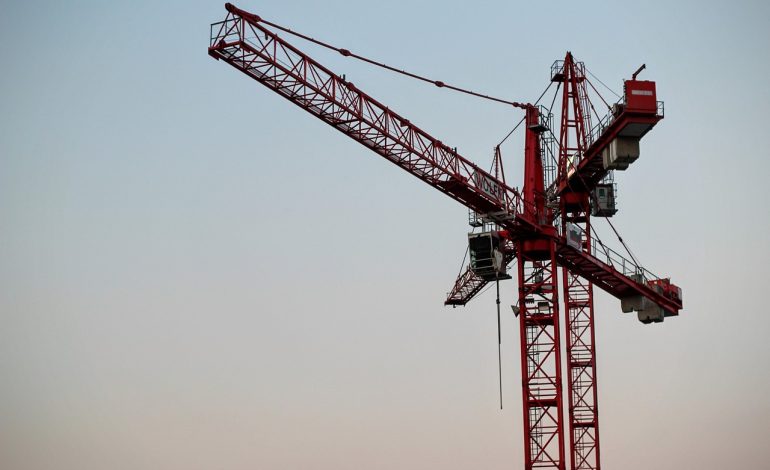
The Occupational Safety and Health Administration established comprehensive crane inspection requirements following numerous workplace fatalities and injuries. These federal standards create minimum safety baselines that all employers must meet, regardless of industry or location.
OSHA’s crane standards took effect in 2010 after extensive industry consultation and tragic incidents highlighting inadequate inspection practices. The regulations cover everything from daily pre-use checks to comprehensive annual evaluations.
Understanding these requirements prevents costly violations while protecting workers from preventable accidents. Non-compliance can result in significant penalties, work stoppages, and increased liability exposure.
OSHA 1926 Subpart CC Overview
The construction industry crane standard applies to most mobile cranes, tower cranes, and specialized lifting equipment. This comprehensive regulation addresses inspection requirements, operator qualifications, and safety procedures.
Key provisions establish mandatory inspection intervals, required documentation, and qualified person criteria. Employers must demonstrate compliance through detailed records and proper procedures.
The standard recognizes that different crane types require specialized inspection approaches. Tower cranes have different requirements than mobile equipment due to installation complexity and operational differences.
Daily Inspection Requirements
Pre-Shift Evaluations Operators must perform visual inspections before each shift, examining obvious defects or damage. These quick checks identify immediate hazards requiring correction before operation.
Daily inspections cover control systems, safety devices, wire ropes, and structural components. Any deficiencies must be corrected before equipment use.
Documentation Standards OSHA requires written records of daily inspections, including identified defects and corrective actions. Electronic systems are acceptable if they maintain required information.
Monthly Inspection Protocols
More comprehensive monthly evaluations examine components not easily visible during daily checks. Qualified persons must perform these inspections using established procedures.
Monthly inspections cover structural elements, mechanical systems, and safety device functionality. Detailed examination identifies developing problems before they become dangerous.
Qualified Person Requirements OSHA specifies that qualified persons must have relevant training, experience, and ability to identify hazards. Certification requirements vary by inspection type and equipment complexity.
Annual Inspection Standards
Comprehensive Evaluations Yearly inspections involve detailed examination of all crane systems and components. These evaluations typically require disassembly of certain components for thorough assessment.
Annual inspections must be performed by qualified persons meeting specific criteria. Documentation requirements are extensive, creating permanent maintenance records.
Certification Requirements Some jurisdictions require certified inspectors for annual evaluations. These professionals possess specialized training and testing demonstrating inspection competency.
Real-World Compliance Examples
A large construction company in Texas faced $150,000 in OSHA penalties for inadequate inspection documentation. Despite performing actual inspections, poor record-keeping resulted in violations.
Conversely, a manufacturing facility in Ohio successfully defended against injury claims by demonstrating comprehensive OSHA compliance through detailed inspection records and procedures.
Understanding crane safety inspection procedures ensures OSHA compliance while maintaining operational efficiency. Professional procedures exceed minimum requirements while streamlining documentation.
Special Inspection Triggers
After Incidents OSHA requires special inspections following accidents, near-misses, or equipment modifications. These evaluations ensure equipment remains safe after unusual circumstances.
Extended Storage Cranes stored for extended periods need thorough inspection before returning to service. Environmental exposure during storage can cause hidden damage requiring professional evaluation.
Modifications or Repairs Significant equipment changes trigger inspection requirements ensuring modifications don’t compromise safety systems or structural integrity.
Documentation and Record-Keeping
OSHA mandates specific information in inspection records, including inspector qualifications, identified defects, and corrective actions. Records must be readily available for review.
Electronic record-keeping systems are acceptable provided they contain required information and remain accessible. Many companies find digital systems improve organization and compliance.
Professional services often provide superior documentation meeting OSHA requirements while simplifying compliance management.
Multi-Jurisdictional Considerations
Some states exceed federal OSHA requirements through additional regulations or enforcement interpretations. California, New York, and several other states maintain enhanced standards.
Projects involving federal facilities or contracts may have additional requirements beyond standard OSHA provisions. Government specifications often reference military or agency-specific standards.
Crane inspection services in Chicago understand local interpretations of federal requirements affecting compliance strategies.
Similarly, crane inspection services in Los Angeles navigate state-specific requirements exceeding federal minimums.
Professional Compliance Support
Maintaining OSHA compliance requires ongoing attention to regulatory updates, interpretation changes, and enforcement trends. Professional inspection services provide valuable expertise navigating complex requirements.
Certified Crane Inspectors maintains current knowledge of OSHA requirements while providing comprehensive compliance support. Their services reduce liability exposure while ensuring worker protection.
Understanding what crane inspection involves helps employers develop compliant programs meeting OSHA standards.
Professional mobile crane and tower crane inspection services ensure compliance across various equipment types and applications.
Penalty Avoidance Strategies
Successful OSHA compliance requires proactive planning, consistent implementation, and thorough documentation. Reactive approaches typically result in violations and penalties.
Regular compliance audits identify potential issues before OSHA inspections occur. Professional assessment helps maintain standards while improving operational efficiency.
OSHA crane inspection requirements establish essential safety baselines protecting workers from preventable accidents. Understanding and exceeding these standards demonstrates commitment to workplace safety while avoiding costly violations and liability exposure.
Leave A Reply